Cantor Fitzgerald CTO Todd Berlent Runs Technology Like an Ultra-Marathon
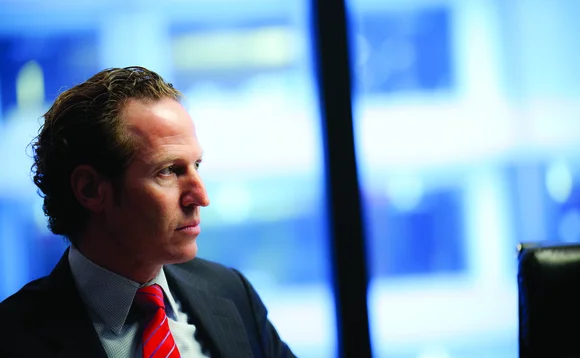
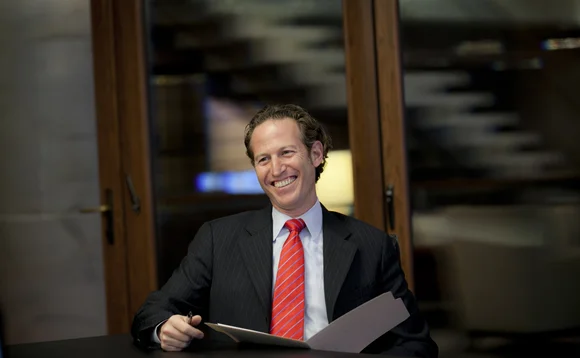
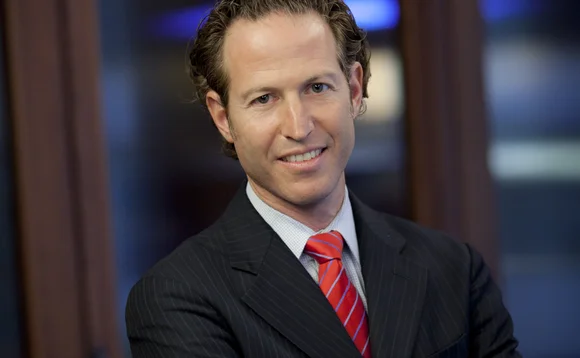
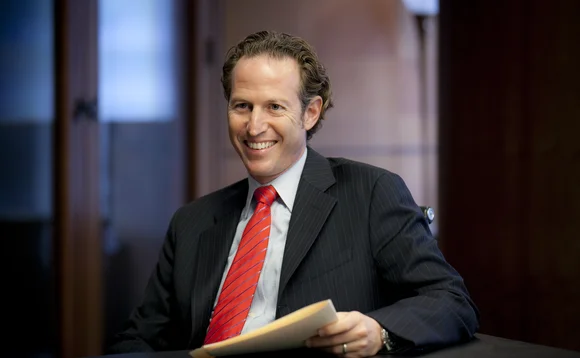
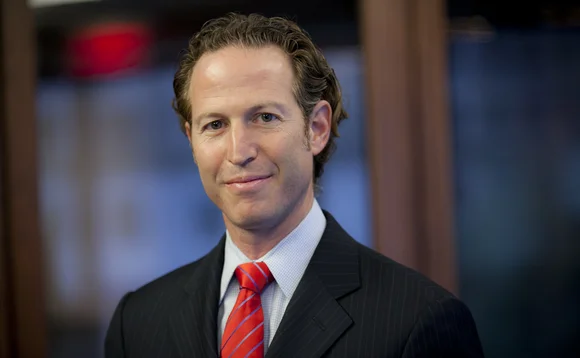
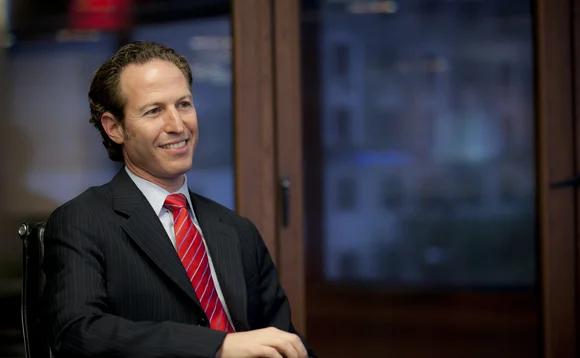
Hovering only a few floors above Park Avenue on a bleak morning in midtown Manhattan, Todd Berlent is uncomfortable, a rarity for Cantor Fitzgerald’s chief technology officer. As his photos are being taken—this latest one a portrait with his arms authoritatively crossed—the reason why becomes clear, and Berlent finally admits it: He just can’t quite stand being still. “Running is just more natural,” he says, breaking pose.
But when Berlent says “running,” he doesn’t mean around the block. An ultra-marathoner for several years, he has run numerous 50- and 100-kilometer (31- and 62-mile) races and last summer finished one of the four legs of the “grand slam” of ultra-marathon running, the Vermont 100 Mile Endurance Run—100 miles, all at once, on foot.
Long Island, NY, where Berlent lives and trains, provides some geographical context: Taking a straight line one could almost run the island’s entire length—well past the Hamptons and nearly to Montauk—without hitting the 100-mile mark. And the race in Vermont is neither flat nor paved; in fact, it is the only race in the country in which runners and horses share the course. Glow sticks are required to run the course at night.
To officially finish the Vermont run—and to an outsider, this seems especially cruel—entrants must finish in under 30 hours. Berlent, who finished in fewer than 24, says the whole experience “is about as intense as it gets,” with the dirt and sweat of an entire day seeming a stark contrast to the cool control of Cantor’s boardroom. Yet perhaps the two aren’t so far apart.
“Distance running is not unlike managing an IT project,” he says. “Patience, perseverance, and the ability to adapt to changes and make corrections mid-run are crucial. It really is analogous to running a race, where you don’t control the weather or other external factors. Technology projects often present hurdles and other challenges you need to overcome.”
Long-Slow Distance
Like training for an ultra marathon, the rise to chief technologist at a major Wall Street brokerage firm can be arduous—and probably impossible without a proper method. Many marathoners use an approach called “long-slow distance,” building up cardiac strength incrementally. Berlent’s path to becoming Cantor’s CTO has likewise seen two decades of different roles, each building on the last. But it began with a simple realization.
Graduating in 1989 with a computer science degree from the University of Michigan, Berlent entered the software field just as programming—and its applications for finance—was truly coming into its own. One of his first jobs, with a vendor called Teknekron Software Systems, now Tibco Software, in a customer-support role, taught him two important lessons.
For one, Berlent says the job helped ingrain client service in his mindset from day one. But he also began to discover a pragmatic theory of the organizational role technology can play—and one that would lead him very quickly to the markets. “A lot of technologists were there because they were really into the technology, itself. What attracted me to financial services is that it’s not about finding the coolest tool or latest thing—it’s about applying technology, as an enabler, to solve a business problem,” Berlent says.
In the following years, Berlent wasted little time tackling business problems. He went on to head fixed-income technology for North America at Deutsche Bank, as well as spend time at a nascent hedge fund—an experience, he says, that had a lasting impact on his management style. “The fund was founded by a senior executive at a major bulge-bracket bank, who wanted to create an organization with a culture of empowerment, trust, and loyalty that he thought was lacking at the big firms.”
With a specialized knowledge of fixed-income products on both the buy and sell sides, and a managerial affinity for keeping things small, independent, and people-focused, Berlent was ready for a bigger challenge, one where he could influence corporate strategy and really build the role of technology, on an executive level, in a prudent and sustainable way.
And if there were ever a firm that knows something about weathering the unexpected, it would be Cantor Fitzgerald.
Hitting Stride
Reserved, comparatively small at 1,400 staff, and in many ways a vestige of Wall Street’s hardworking past private partnerships, Cantor Fitzgerald rose rapidly on the back of its bonds brokerage in the 1990s. However, it was tragically thrust into the narrative of the September 11 attacks when many of its employees, including the bulk of its traders, lost their lives trapped in Cantor’s offices at One World Trade Center—severely threatening the firm’s existence.
Cantor was able to survive, in part, because of the difficult and at times controversial decisions made by its CEO, Howard Lutnick. It also benefited from some well-timed investments in technology. In particular, its development of an electronic bonds trading platform already under way in 2001 allowed sales, temporarily directed out of London, to continue while the firm reorganized in the months after the attacks.
Yet even through the post-9/11 interregnum, Cantor retained its ambitious, no-nonsense character. And Berlent points out that when he joined the firm in 2005, first becoming CIO for its Debt Capital Markets (DCM) business, it was Cantor’s legacy qualities—an entrepreneurial spirit and the premium placed on client service—that attracted him.
“Cantor is a flat organization, hands-on top to bottom, and always has been. The concept of simply being a manager here doesn’t exist; we all lead, and culturally we’ve always managed technology with that efficient approach,” Berlent says, explaining that the absence of corporate bureaucracy saw him accomplish more in his first eight months with the firm than in the previous eight years elsewhere.
One early in-house example of that was Sorcerer, a series of distributed components Berlent’s team designed to identify liquidity in the marketplace and help Cantor’s sales staff generate practical trade ideas. “Sorcerer consolidates disparate liquidity sources—hence the name—and integrates that information with our account management system, or AMS. Its design was ultimately about combining what we know about our customers with data from the marketplace and using technology to leverage that information across our distribution platform,” he says.
Double Helix
While running the nut-and-bolts technology for Cantor’s DCM, Berlent knew he had more to offer on the business side. As Cantor sought to reconstitute itself through a strategy of timely acquisitions, an agreement signed less than a year after Berlent’s hiring saw the firm buy a provider of specialized fixed-income technology solutions—of which Cantor was a major customer—called Helix Financial Systems. And when senior management sought someone to lead Helix’s team, Berlent jumped at what seemed a perfect opportunity.
“I was involved on the due diligence committee for the deal, and I thought there was tremendous potential, not just from the point of view of the software’s features and functions, but in Cantor’s name-recognition and reputation elevating Helix’s position in the marketplace,” he says.
The deal stipulated Helix operate at arm’s length, with its own profit-and-loss (P&L) and balance sheet, but in mutual cooperation with Cantor that could, with the right moves, significantly improve its pair of mainstay securities technology solutions: HelixRepo, its integrated trading and reporting engine for the range of bilateral and tri-party repurchase agreements; and Helix MBS, which enables the efficient allocation of mortgage-backed securities.
Molding that relationship in the early days proved critical. Eric Brandt, Helix’s director of sales, says Berlent’s strategy for integrating the software firm proved effective not only in the important early days, but is still yielding benefits. “Todd helped build the corporate structure needed to expand Helix’s client base for our current products—and began to think strategically about new products we should be developing or purchasing, whether through alliances with other vendors or outright acquisitions,” Brandt says.
One advantage, Berlent says, is that the deal provided a catalyst for product development literally steps away. “Customer feedback and requirements drive innovation around Helix’s product functionality, and the proximity of just walking a couple flights of stairs to Cantor’s Repo trading desk, and being able to engage in those conversations at that intimate level, definitely helps.”
Meanwhile, refocusing Helix’s price structure and support also proved an important—and timely—challenge. “We needed to create a flexible pricing strategy to attract different types of organizations we could sell these products to—right-sizing to both large and small firms,” he says. Behind those adjustments would need to be a breadth of service, modeled on the Cantor DNA, which would enable users to successfully transition away from spreadsheets and intensive manual processes like determining the historical pricing distribution of certain fixed-income products.
And when demand for securities finance tightened after the 2008 credit crisis—tri-party repo agreements were estimated to have dropped from their $2.8 trillion peak in 2008 to $1.7 trillion two years later—Berlent says it was “high-touch” support that saw Helix retain the ranks of its customers and has readied it for future product releases—for example, a stock loan management solution that is currently in development—as the market recovers.
Still Entrenched
Even while Berlent continues as president of Helix, the third stage of his career at Cantor Fitzgerald is just unfolding with his promotion to CTO this past March.
If the trick at Helix was to make a small firm as responsive as Cantor, the head technologist position requires harnessing and rationalizing the disparate systems backing Cantor, itself. “Historically, we’ve had our different business lines, and a technology individual responsible for each one of those. So we’re trying to pull those business-aligned systems together and create an enterprise technology organization. It is a vision I’ve had for a while, and have pushed for,” he says, adding that another priority for his new role is to advocate for technology’s role as business decisions are made in the boardroom.
That becomes even more important as the firm further diversifies its holdings and steadily grows its emerging markets business, especially in Central and South America—a regional emphasis for which it brought on new upper-level staff, including two business heads, in the past few months. “Absolutely, we need to make the right decisions on buy-versus-build, and who to potentially partner with as we move into new geographies,” he says.
Equally, as regulatory uncertainty lingers, Cantor’s technology team is involved in helping its chief risk officer more accurately monitor the firm’s risk across its platforms and assets. Understanding the new rules and which solutions can help the firm most efficiently maintain compliance is how much of his time is spent. But if his approach toward outsourcing is decidedly measured, reflecting Cantor’s proprietary mindset and aversion to operational risk, Berlent lights up when the conversation moves to Cantor’s people.
Berlent says he looks to recruit and foster technologists who are “opposite of the cliché: a ‘jack of all trades, but master of many’—part-developer, part project manager, and part business analyst.” That mixed set of skills and the opportunity to work in small teams have helped the firm recruit and retain the talent as hiring competition within finance and, increasingly, with Silicon Alley, has heated up in recent years. But that success is also down to Berlent striking the right balance. “Todd is empowering, even while he remains entrenched and extremely knowledgeable about the business,” Brandt says.
Required Skills
Luckily, running 100 miles in a day is not among Berlent’s required skills—at least not yet—but he has found a way to cross ultra-running and the office: His latest project is organizing a team in support of Cantor’s 9/11 Charity Day, an annual event during which the firm donates its full profits to the foundation benefiting Cantor victims’ families each year. The team and he will join others in running the September 11th 50K—a mere 31 miles—all the way around Manhattan.
And whether for that memorial, at mile 88 of a personal quest in Vermont, or working with software programmers on a subtle but critical enhancement for a client, the mental agility and relentlessness—what Brandt calls Berlent’s “presence”—are the same, no matter the obstacles or distance off to the finish. After all, when thinking in Berlent’s outsized terms, spanning ever-greater distances and objectives, you keep moving. “When something is important, you don’t find the time; you make the time.” Naturally.
Only users who have a paid subscription or are part of a corporate subscription are able to print or copy content.
To access these options, along with all other subscription benefits, please contact info@waterstechnology.com or view our subscription options here: https://subscriptions.waterstechnology.com/subscribe
You are currently unable to print this content. Please contact info@waterstechnology.com to find out more.
You are currently unable to copy this content. Please contact info@waterstechnology.com to find out more.
Copyright Infopro Digital Limited. All rights reserved.
As outlined in our terms and conditions, https://www.infopro-digital.com/terms-and-conditions/subscriptions/ (point 2.4), printing is limited to a single copy.
If you would like to purchase additional rights please email info@waterstechnology.com
Copyright Infopro Digital Limited. All rights reserved.
You may share this content using our article tools. As outlined in our terms and conditions, https://www.infopro-digital.com/terms-and-conditions/subscriptions/ (clause 2.4), an Authorised User may only make one copy of the materials for their own personal use. You must also comply with the restrictions in clause 2.5.
If you would like to purchase additional rights please email info@waterstechnology.com
More on Emerging Technologies
Banks split over AI risk management
Model teams hold the reins, but some argue AI is an enterprise risk.
Waters Wavelength Ep. 344: Hot topics for 2026
Tony and Shen preview some of the topics they think will be big this year.
Fintechs grapple with how to enter Middle East markets
Intense relationship building, lack of data standards, and murky but improving market structure all await tech firms hoping to capitalize on the region’s growth.
SimCorp–MSCI expand partnership, quantum exploration, Dora concerns, and more
The Waters Cooler: Droit launches GenAI regtech tool, bids for EU OTC derivatives tape open, and more in this week’s news roundup.
The quantum leap: How investment firms are innovating with quantum tech
While banks and asset managers are already experimenting with quantum computing to optimize operations, they should also be proactive in adopting quantum-safe strategies.
‘The end of the beginning’: Brown Brothers Harriman re-invents itself
Voice of the CDO: Firms who want to use AI successfully better start with their metadata, says BBH’s Mike McGovern and Kevin Welch.
2026 will be the year agent armies awaken
Waters Wrap: Several AI experts have recently said that the next 12 months will see significant progress for agentic AI. Are capital markets firms ready for this shift from generative AI to agents?
Editor’s Picks: Our best from 2025
Anthony Malakian picks out 10 stories from the past 12 months that set the stage for the new year.







